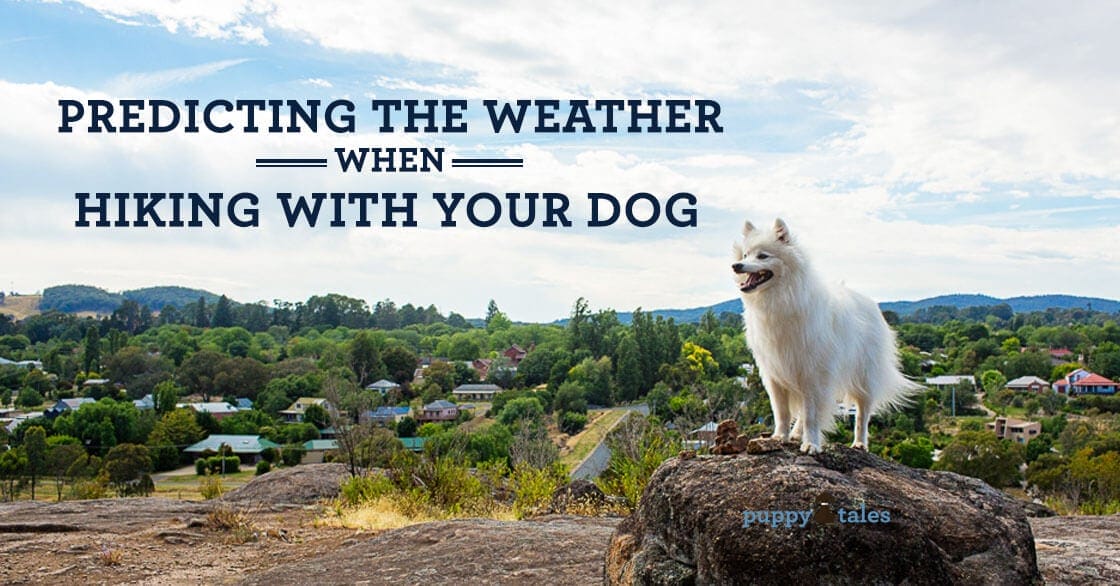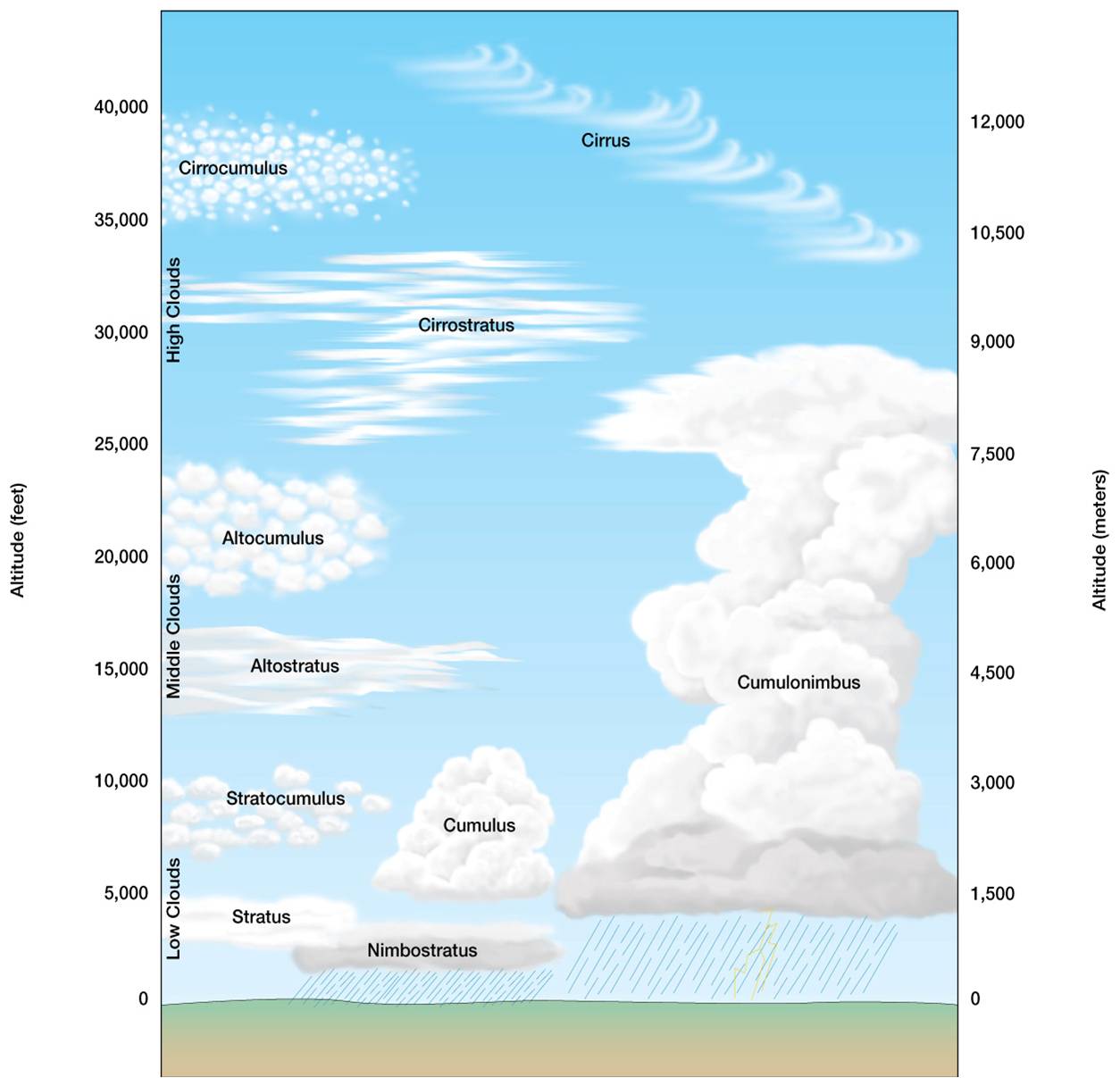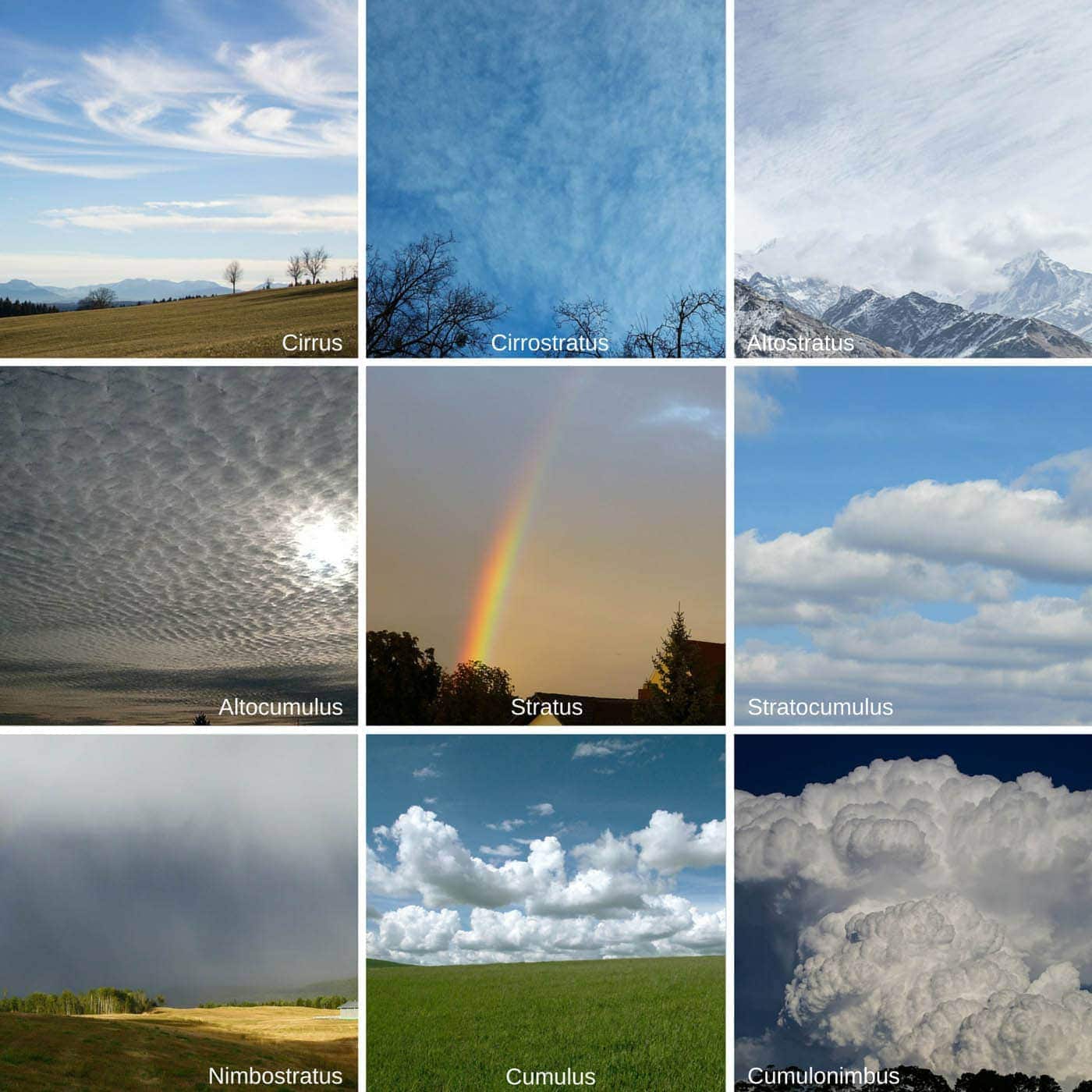Anyone who has ever enjoyed hiking with their dog knows how quickly the weather can turn. You can start with a crystal clear morning and in a few short hours, you and your best buddy might be fighting wind and rain or finding your way through the fog and limited visibility.
If you’ve ever hiked in the high or alpine country before, then you know you must pack clothing and gear for all seasons – you just might get all four in one day!
Weather forecasts are brilliant and help greatly in preparing for your trip, but as any hiker knows, things can change in an instant on the mountain. So learning how to read the sky is a valuable skill when planning to hit the trails. It ensures a great and safe day out on the trails for you and your dog.

When I was a teenager, my Dad and I started hiking with a friend who was an Outdoor Education teacher. His knowledge of the outdoors, fauna and flora seemed endless, and it was he who first taught me how to read the sky and how to plan your trip around what it was telling you.
“The higher the clouds, the better the weather.”
He often said this, and often proved to be true! Learning how to read the sky has kept me out of trouble a few times in the high country, so here is what I know and with a little research what a lot of Nepholologists (people who study clouds) are saying too!
Types of clouds There are many different types of clouds and they can be categorised by shape ~ Nimbus, Stratus and Cumulus ~ and where they sit in the sky ~ high, middle, low and vertical.
 Image Curtest of University of Colorado Denver
Image Curtest of University of Colorado Denver
High clouds
Cirrus
Cirrus clouds, or how I always remember them “horses tails” are clouds that form high in the sky. When you see cirrus clouds, it can generally mean that fine weather is imminent in the immediate future but also indicates that a change in the weather will occur within about 24 hours.
Cirrostratus
Cirrostratus clouds are those fluffy fine clouds that are more dispersed and tend to cover the whole sky. These often mean that cold weather or rain is on the horizon. High clouds are good to see when out hiking, they mean fine weather during the day but also cold nights so make sure you rug up at camp!
Middle clouds
Altostratus
Altostratus clouds are those that cover the whole sky, they sit lower in the atmosphere and can mean a storm is coming sometime soon. You can generally see the sun and moon shining through these too.
Altocumulus
Altocumulus are small fluffy clouds that sit close together, blanketing the whole sky. If you see these, get your raincoat ready as there is a storm coming!
Low clouds
Stratus
Stratus clouds look like the sky has been blanketed in fog. They cover the sun and look solid. If it’s not already raining or snowing, it will be soon.
Stratocumulus
Low-lying grey clouds that often present in rows. Nothing too much to worry about with these as they don’t bring rain, they are pretty to look at though!
Nimbostratus
Is the sky just one lot of grey? Chances are it’s a Nimbostratus cloud and it’s already raining!

Vertical clouds
Cumulus
Cumulus clouds are generally what we think of when we think clouds. These are those large white fluffy clouds we see rabbits, dogs and cauliflowers out of! When they are low and travelling on their merry way, there is no need to worry about bad weather but if they start to grow in height, that’s when you keep an eye on them as this could mean a large storm in on its way.
Cumulonimbus
Cumulonimbus is the result of Cumulus clouds that have grown. These clouds take on an anvil shape and mean a thunderstorm is imminent. If you see these clouds out on the trails, it’s time to head to shelter and protect yourself as best you can as these clouds mean hail, strong winds and lightning.
Reading the clouds
If they are moving fast, inclement weather is on its way soon. If they are moving slowly then you may have a day or two before it hits. Be sure to watch the large fluffy white ones as these can bring the most dangerous weather if they start to climb in height.
Always be prepared for all seasons when hiking. I once packed snow gloves, a beanie and a padded jacket for a summer hike in the Victorian Alps and was laughed at by some of my fellow hikers for being ‘over cautious’ guess what it snowed in the middle of summer and I walked out of there warm and dry because I was prepared.
Learning to read the sky is one of the most valuable skills I have been taught for life in the backcountry, plus it’s a good party trick to pull out! So I’ll leave you with this, as my old Outdoor Ed teacher would say:
“Keep your eye on the sky!”
Checking the skies…. which clouds are they, Summer?

Jennifer Phelan
Jennifer is a web-developer and blogger who is passionate about spending time in the outdoors with her kelpie Kate. Jennifer believes in encouraging people to lead an active and inclusive life with their dogs and hopes Dog Adventures inspires people to do so.
The aptly named Dog Adventures is all about encouraging people to adventure with their dogs and includes Australian dog friendly camp sites, hikes, stories and gear reviews.




